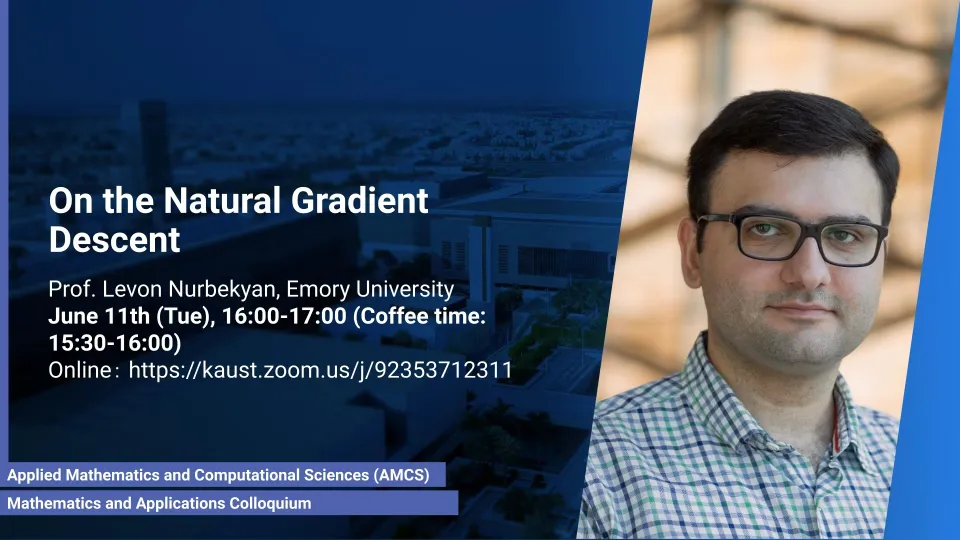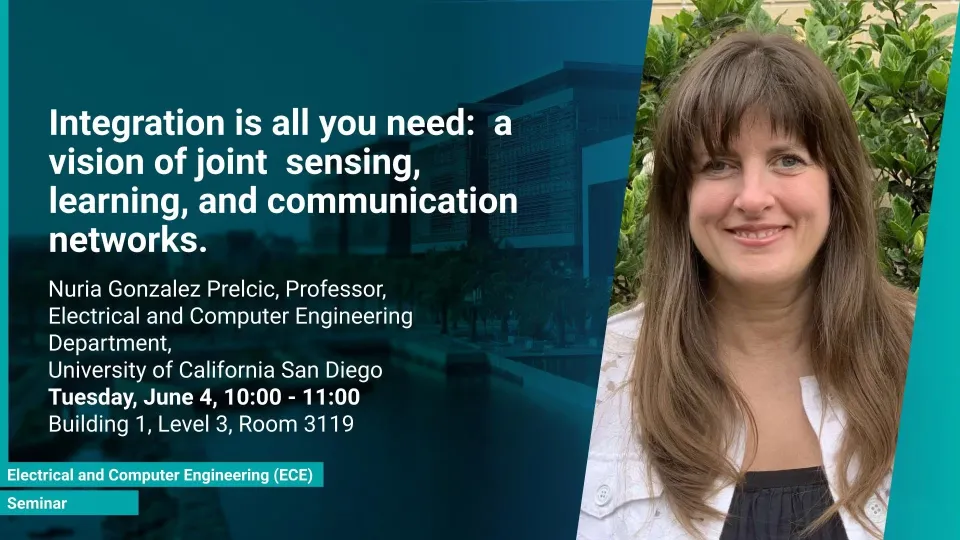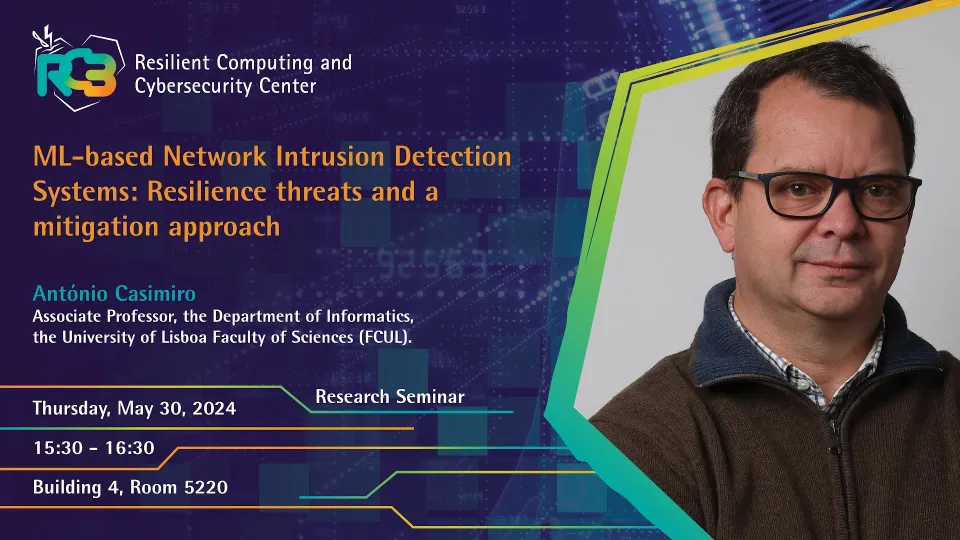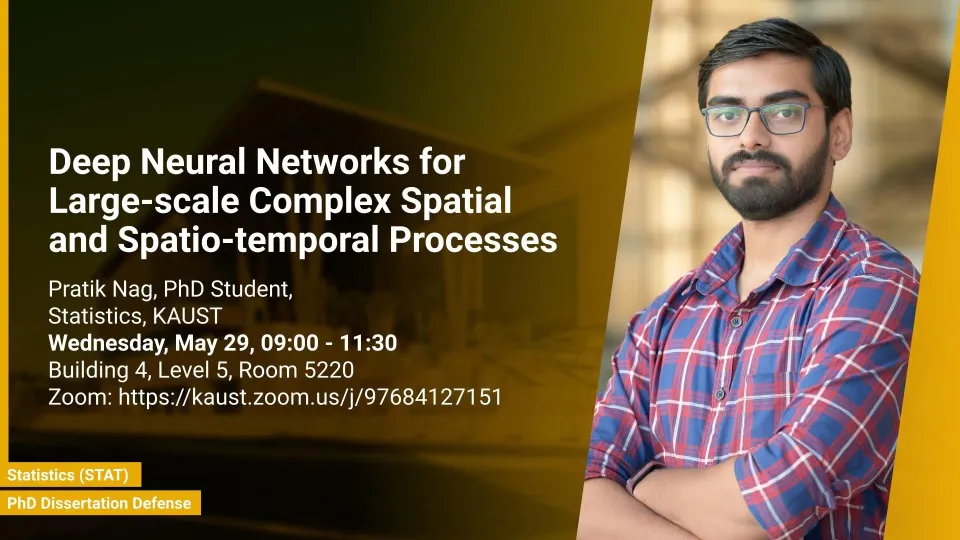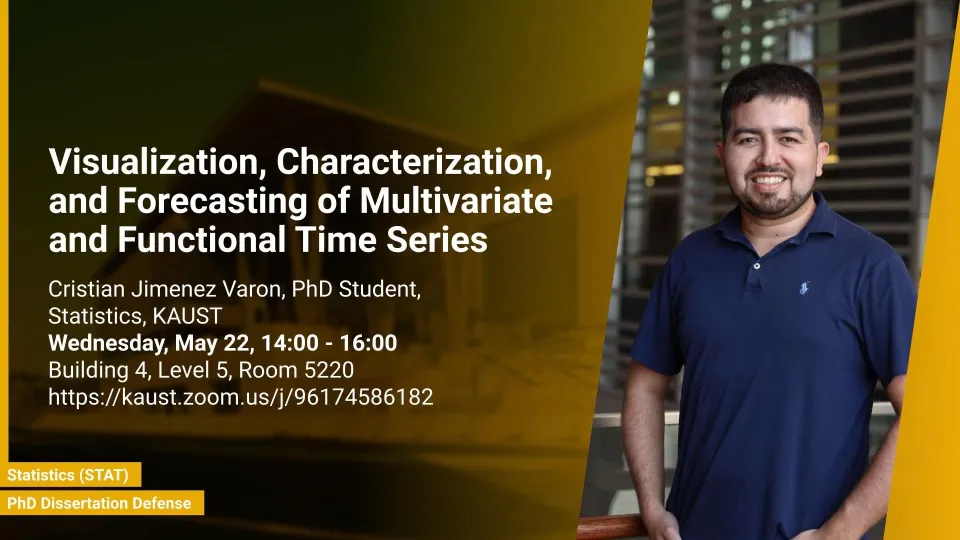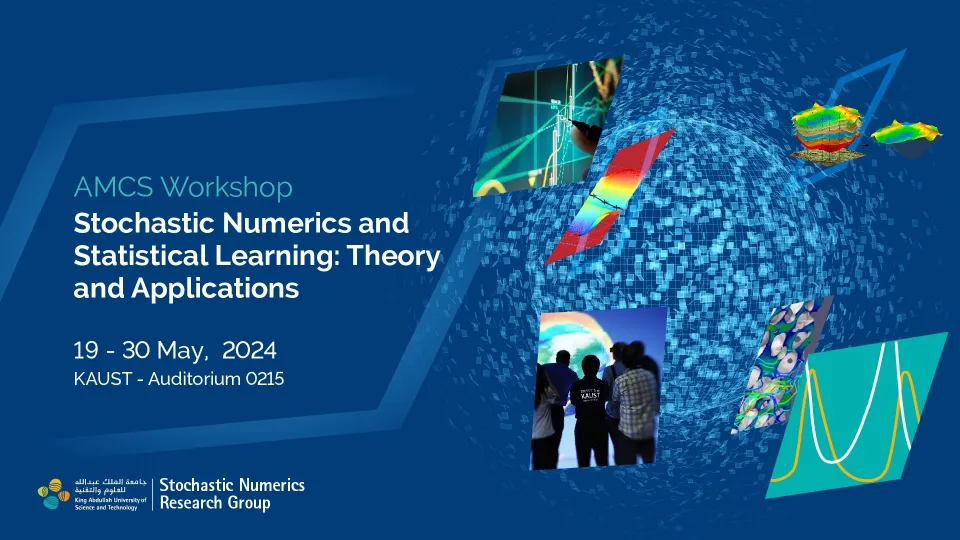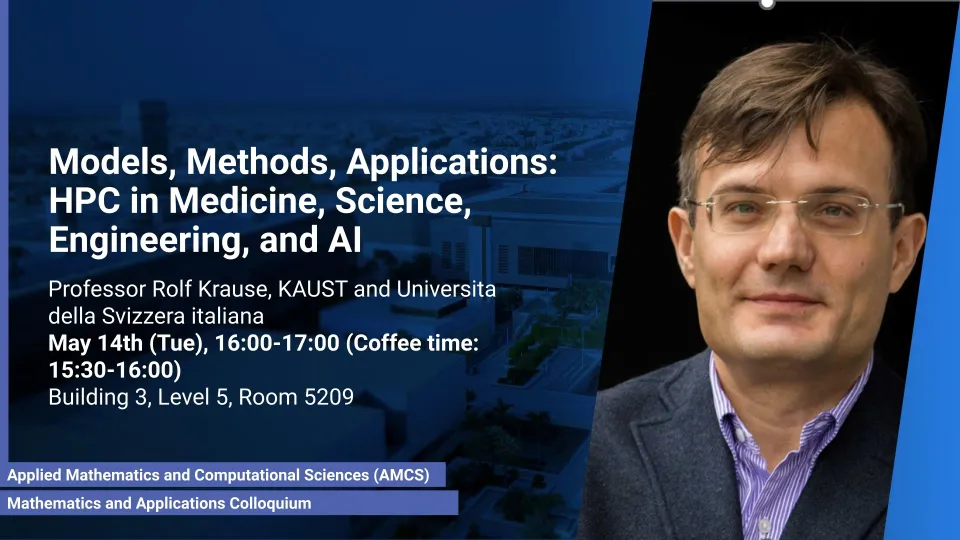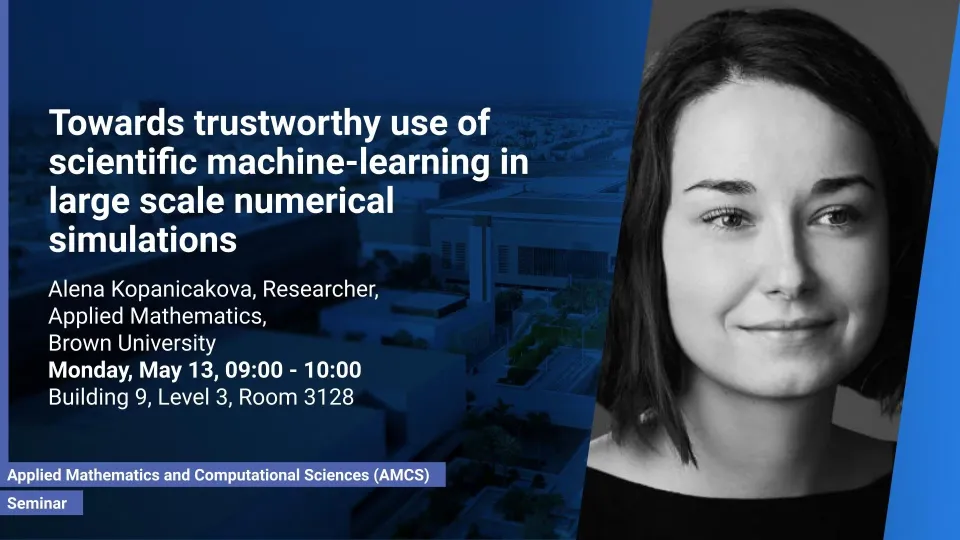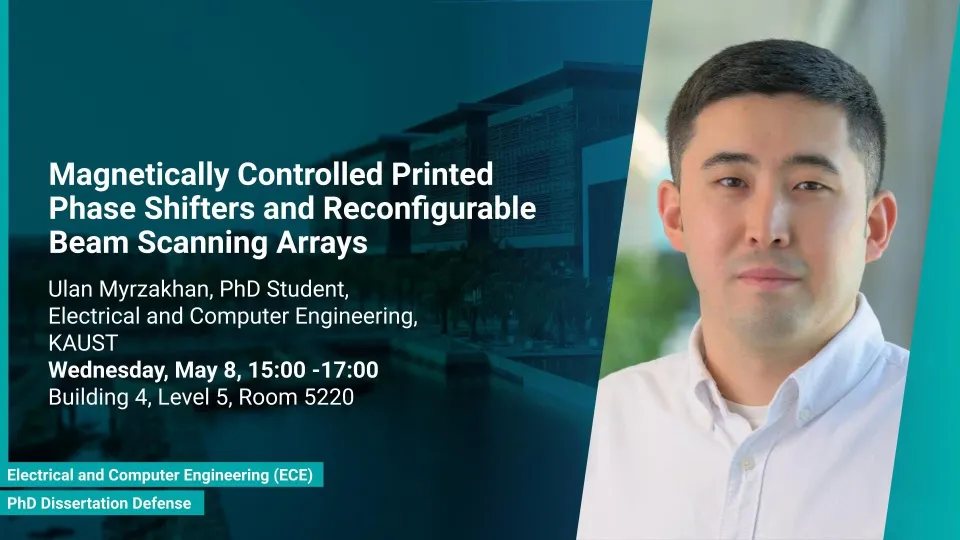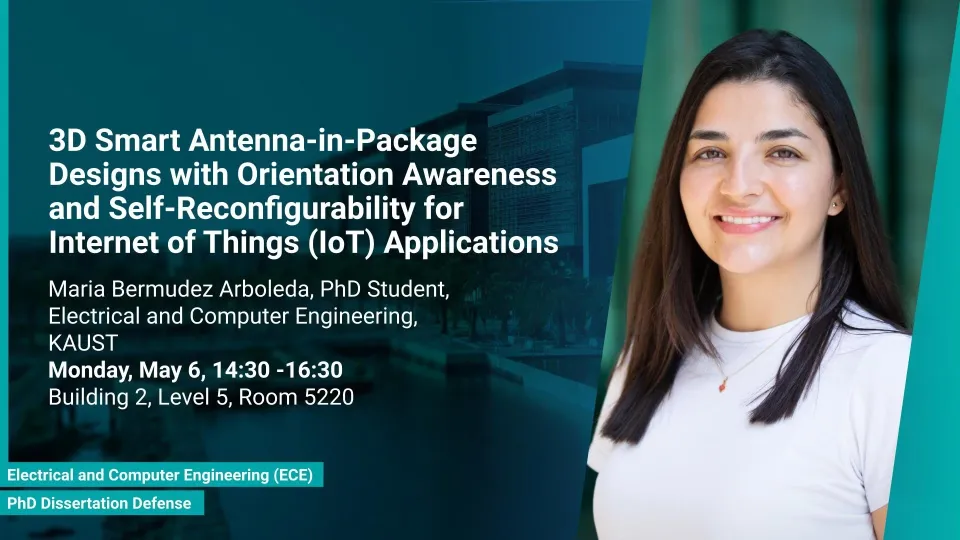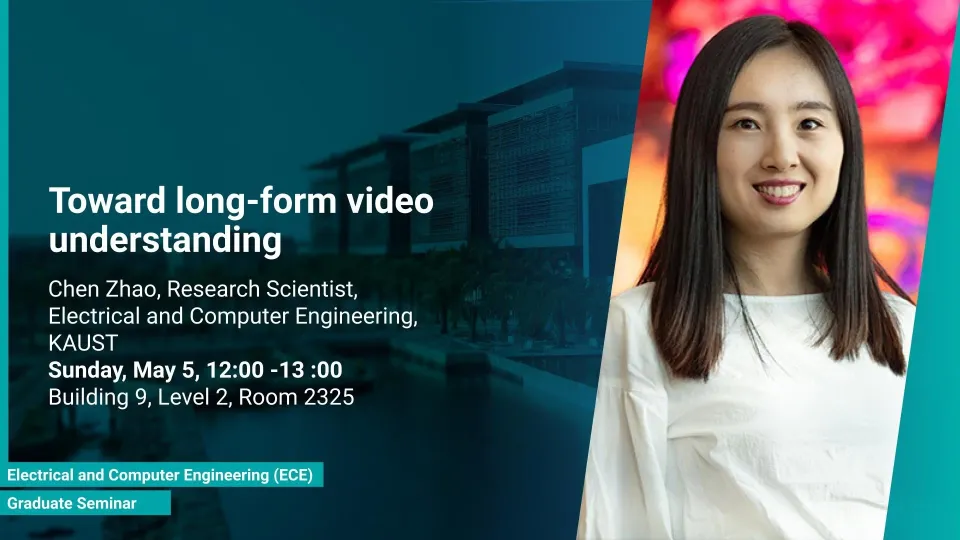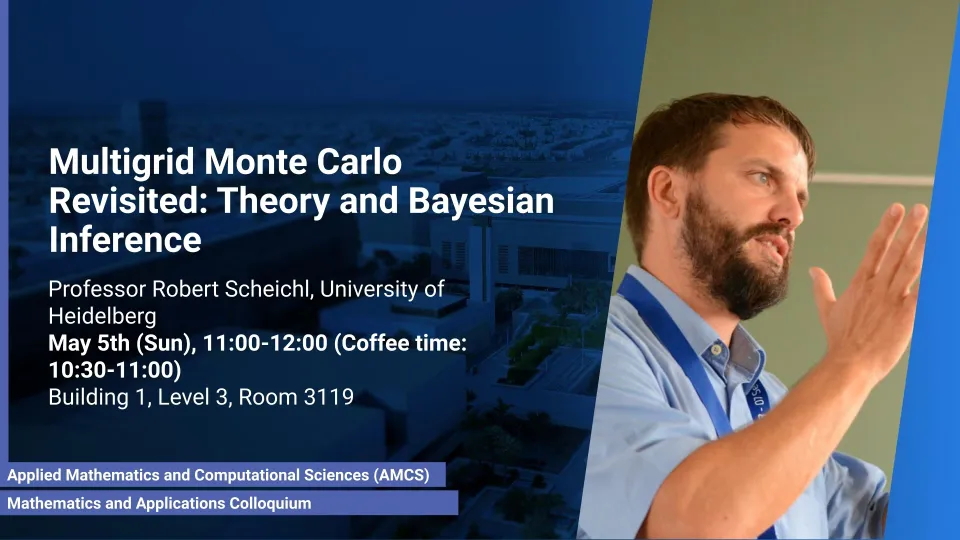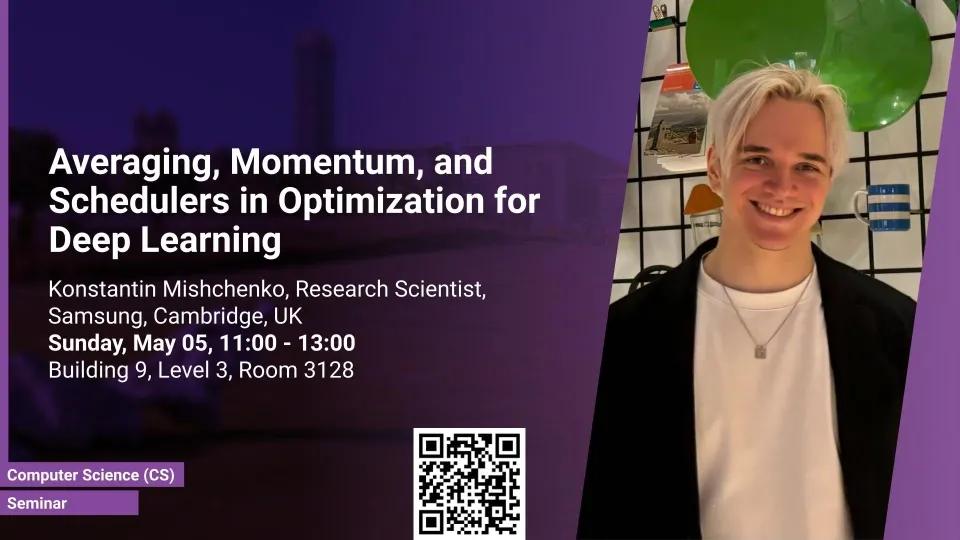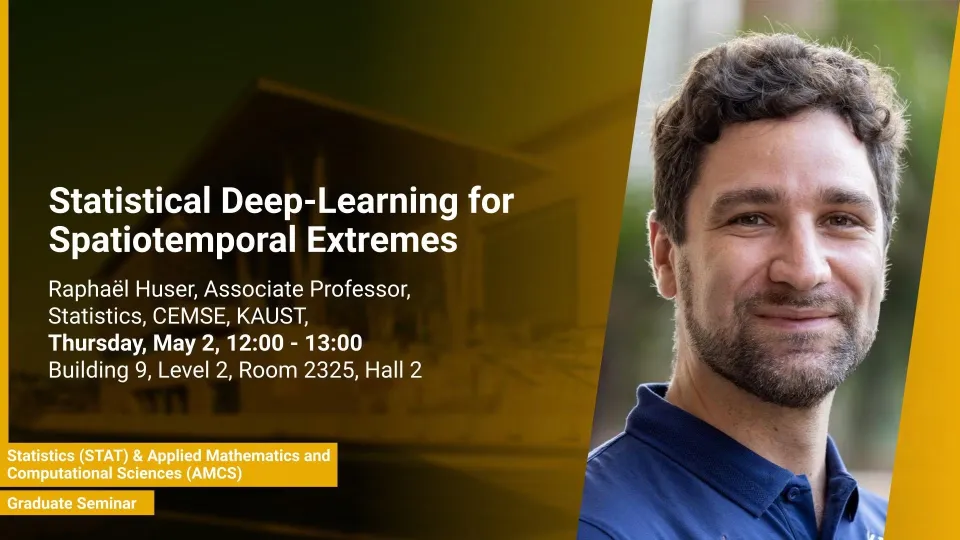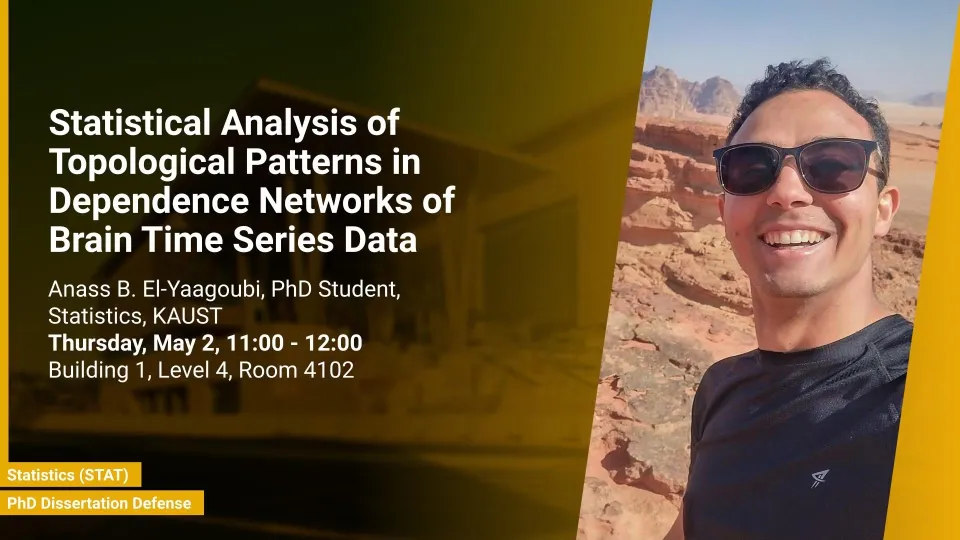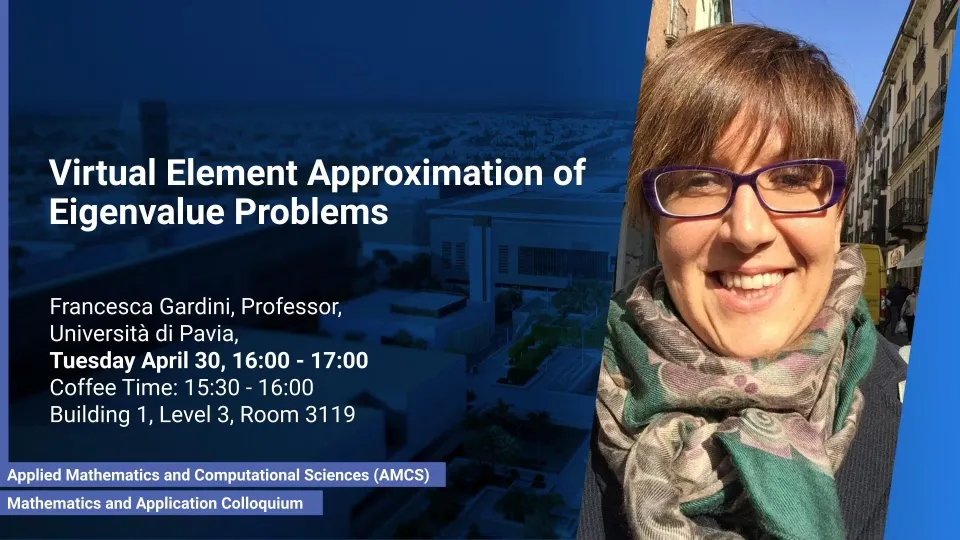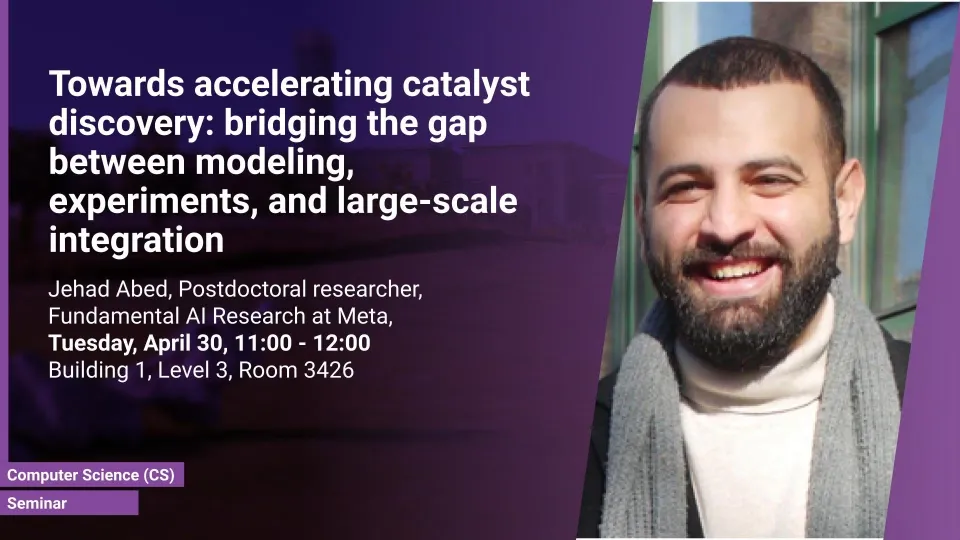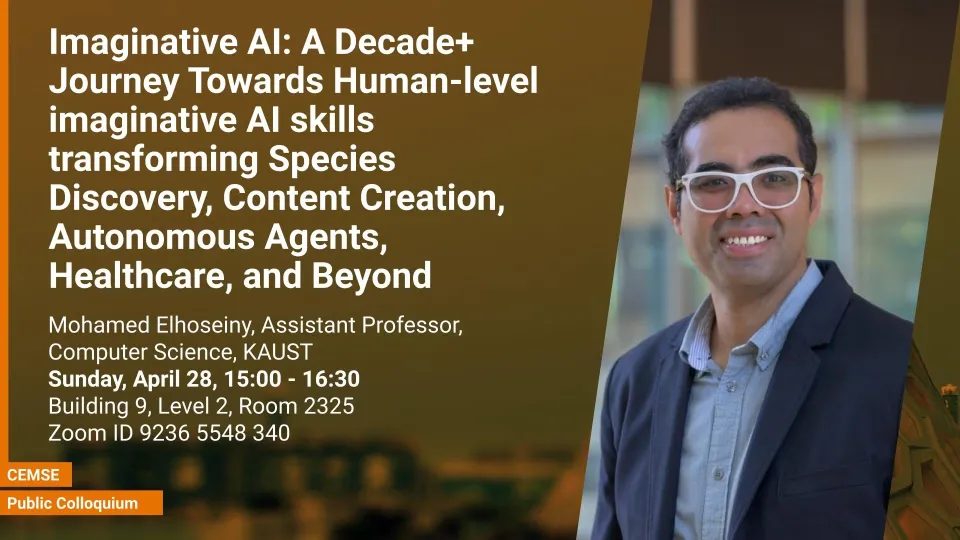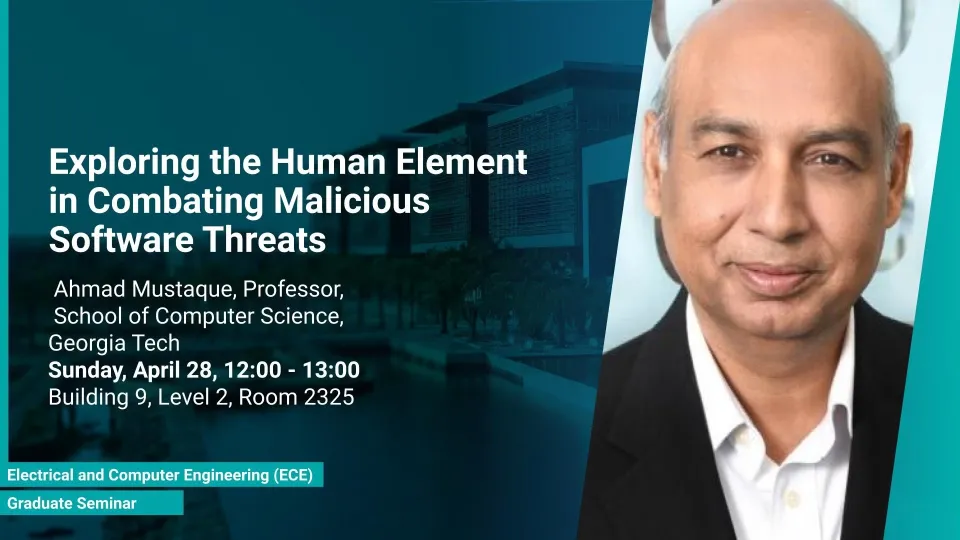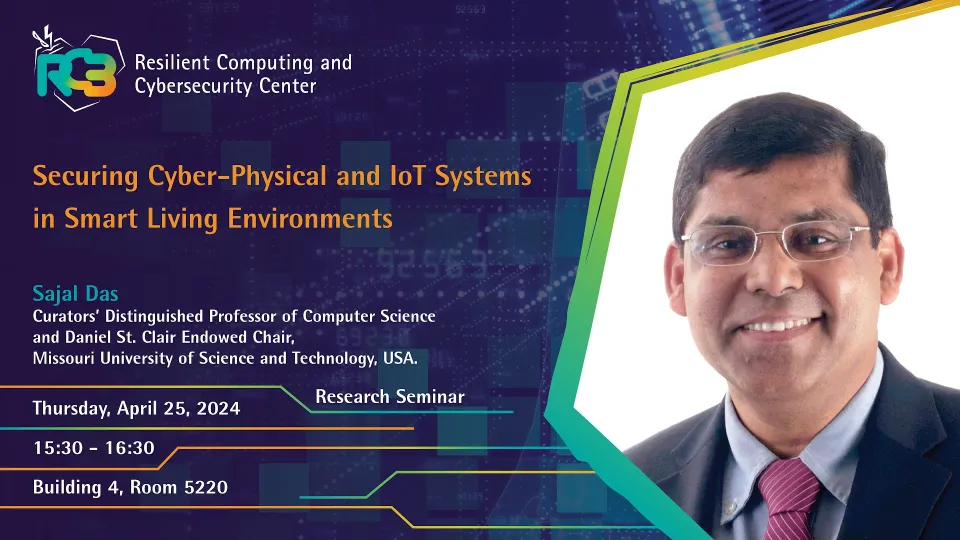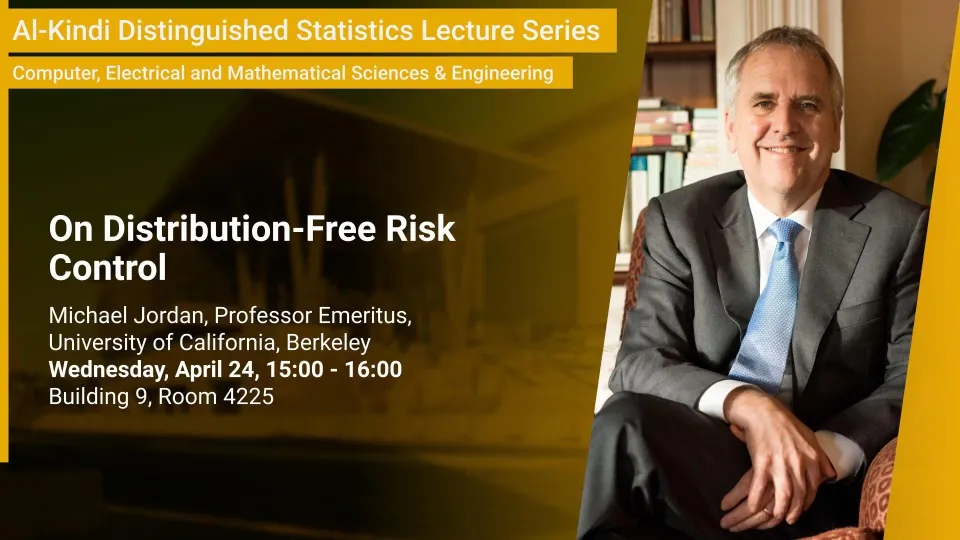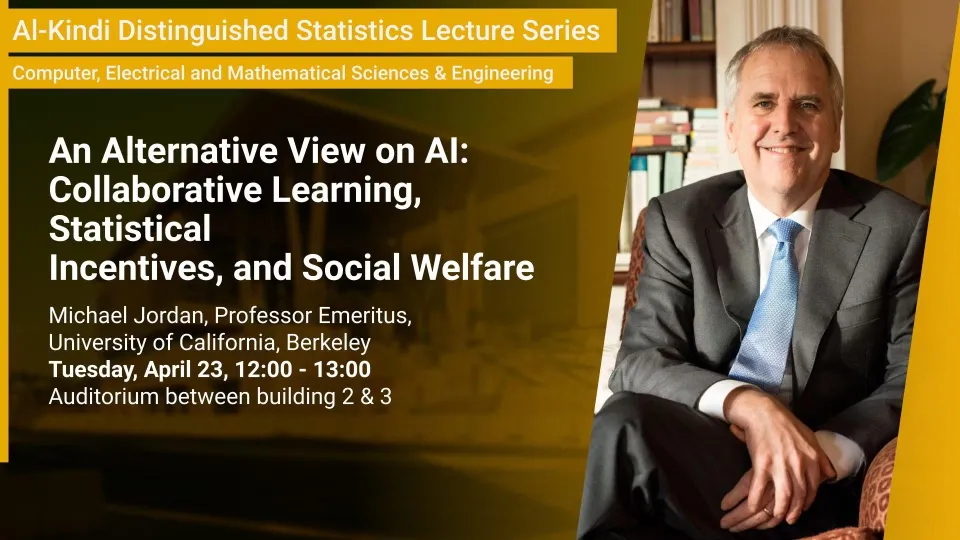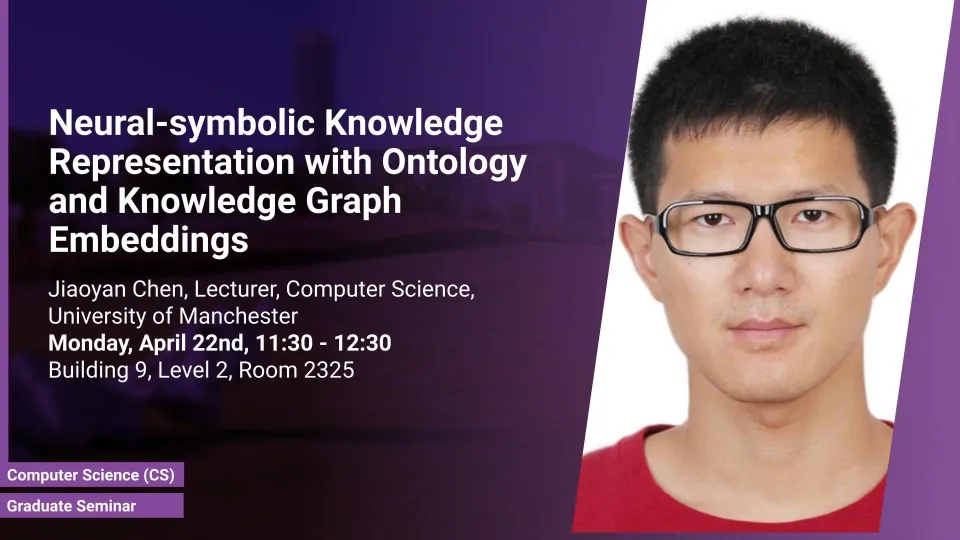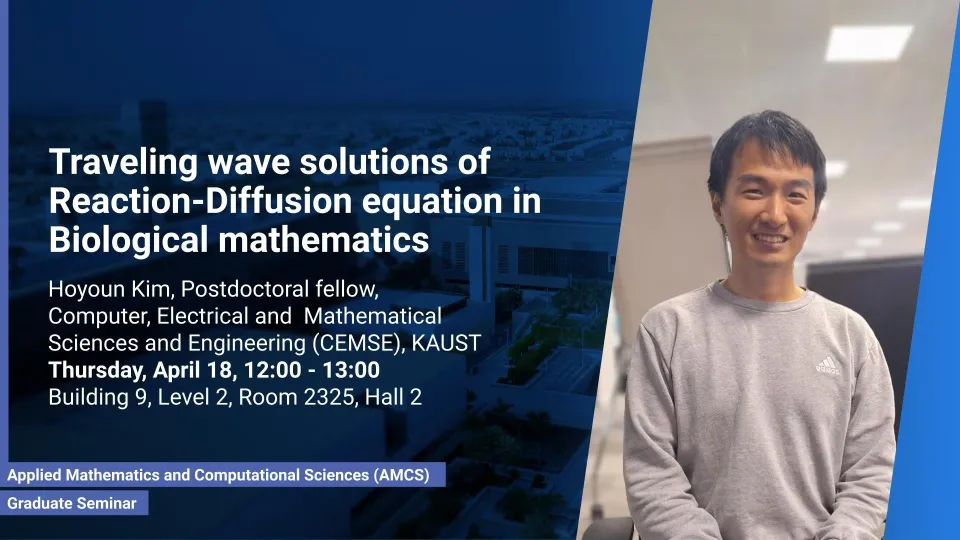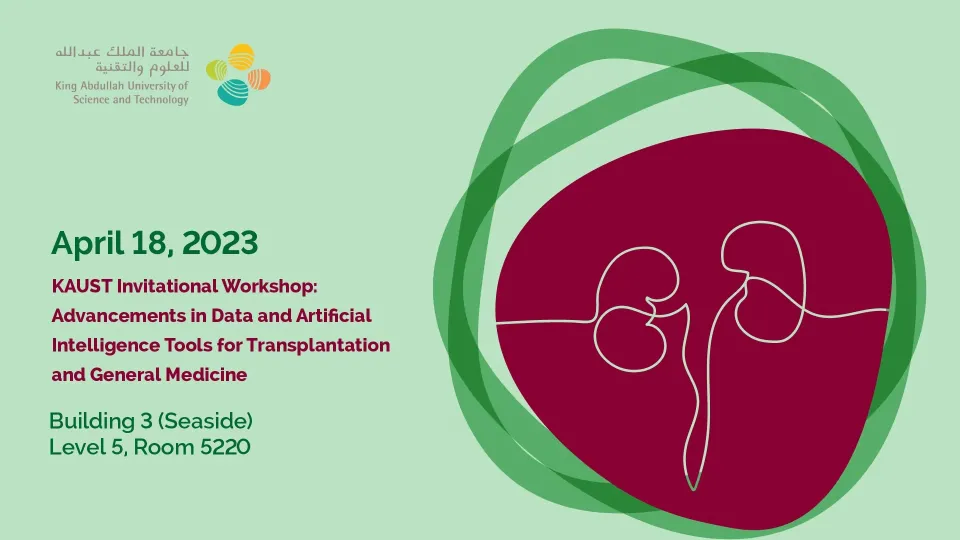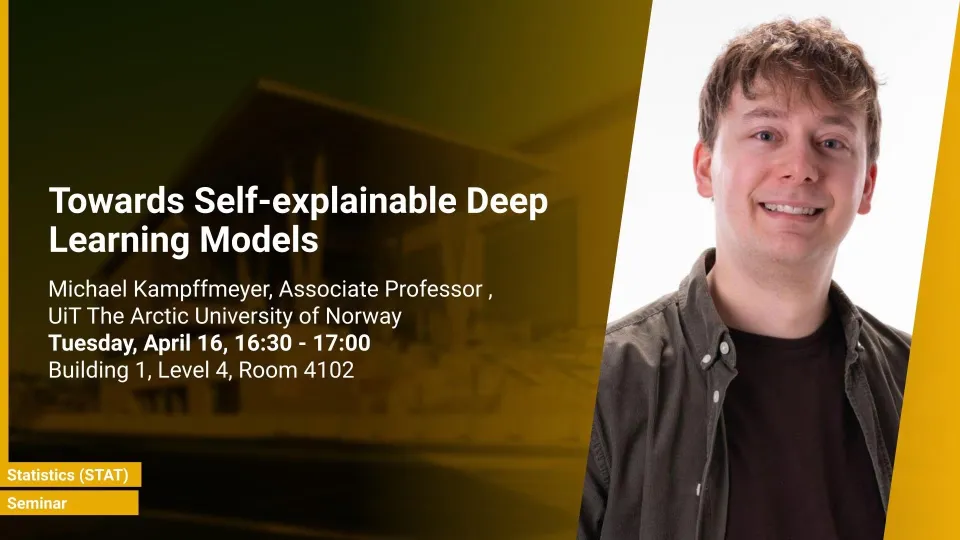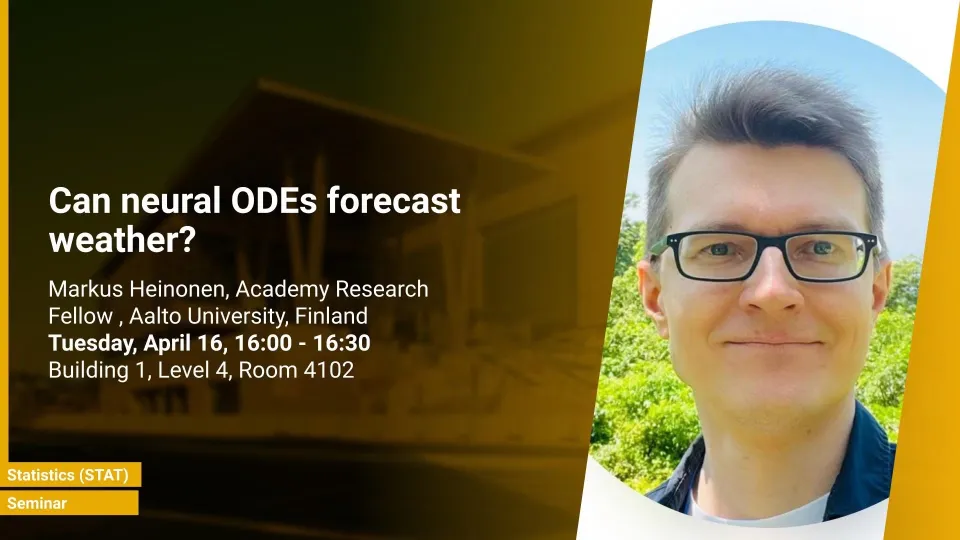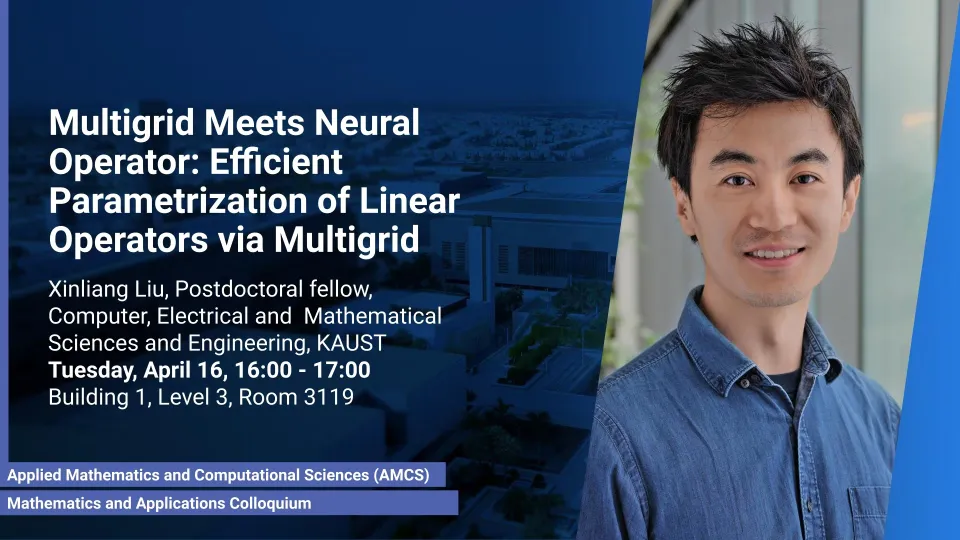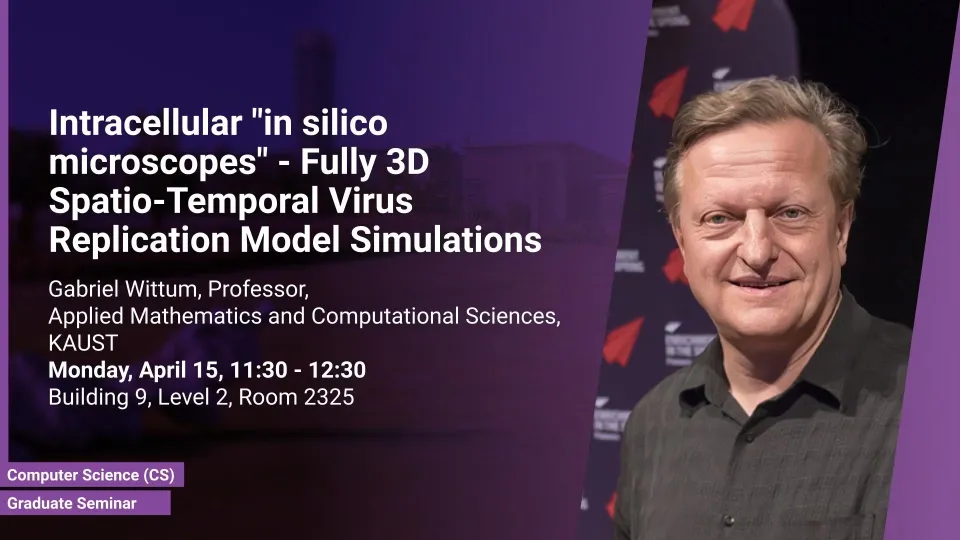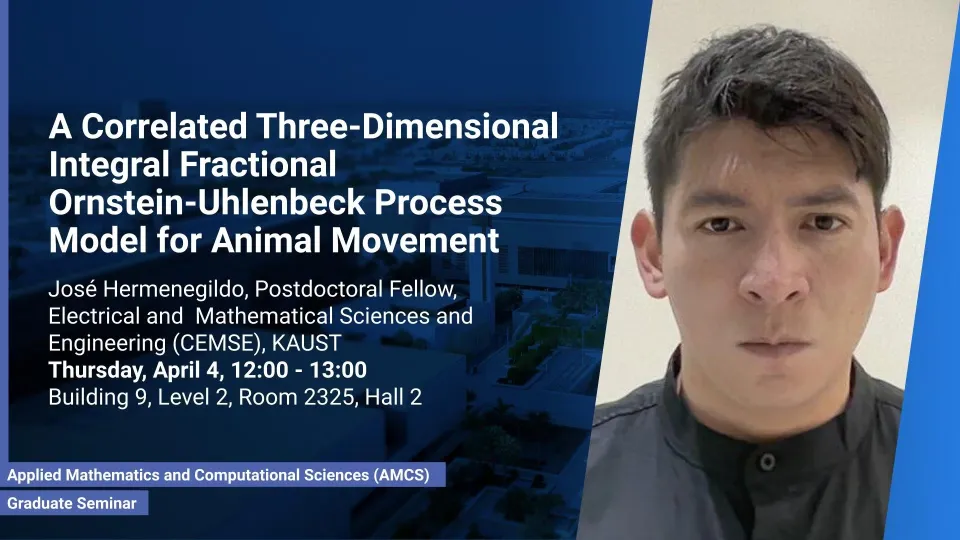Events
Jun 9 - Jun 15, 2024
Jun 2 - Jun 8, 2024
Integration is all you need: a vision of joint sensing, learning, and communication networks
Nuria Gonzalez Prelcic, Professor, Electrical and Computer Engineering, University of California
B1 L3 R3119
May 26 - Jun 1, 2024
May 19 - May 25, 2024
Advancing Plasmonic Modulation: CMOS-Compatible MIS-Schottky Devices for Integrated Photonics
Dr.Nasir Alfaraj, Department of Electrical and computer Engineering, University of Toronto
B9 L3 R3128
Stochastic Numerics and Statistical Learning: Theory and Applications Workshop 2024
Stochastic Numerics PI Professor Raul Tempone (Chair) and Computational Probability PI Professor Ajay Jasra (Co-Chair)
B2 B3 A0215
May 12 - May 18, 2024
May 5 - May 11, 2024
Apr 28 - May 4, 2024
Virtual Element Approximation of Eigenvalue Problems
Prof. Francesca Gardini, Università di Pavia
B1 L3 R3119
Towards accelerating catalyst discovery: bridging the gap between modeling, experiments, and large-scale integration
Dr. Jehad Abed, Postdoctoral Researcher, Fundamental AI Research at Meta
B1 L3 R3426
Discovering HTTP/2 DoS Vulnerabilities using Protocol Reverse Engineering
Prof. Sven Dietrich, Computer Science, City University of New York
B9 L2 H2
A Free Boundary Problem for Accretive Growth
Katerina Nik, Postdoc, Applied Mathematics and Modelling Group, University of Vienna
B9 L3 R3128
Apr 21 - Apr 27, 2024
Securing Cyber-Physical and IoT Systems in Smart Living Environments
Prof. Sajal K. Das is a Curators’ Distinguished Professor of Computer Science, and Daniel St. Clair Endowed Chair, Missouri University of Science and Technology, USA.
B4 L5 R5220
On Distribution-Free Risk Control
Michael Jordan, Professor Emeritus, University of California, Berkeley
B9 L4 R4225
An Alternative View on AI: Collaborative Learning, Statistical Incentives, and Social Welfare
Michael Jordan, Professor Emeritus, University of California, Berkeley
Auditorium between B2 and 3
Neural-symbolic Knowledge Representation with Ontology and Knowledge Graph Embeddings
Dr. Jiaoyan Chen, Lecturer in Department of Computer Science, The University of Manchester
B9 L2 H2
Energy Flexible Manufacturing
Emeka Chukwureh, Customer Flexibility Solutions, an innovation implementation unit at ENOWA, NEOM
B9 L2 H2
Apr 14 - Apr 20, 2024
Towards Self-explainable Deep Learning Models
Prof. Michael Kampffmeyer, UiT The Arctic University of Norway
B1 L4 R 4102
Can neural ODEs forecast weather?
Dr. Markus Heinonen, Academy Research Fellow, Aalto Univeristy, Finland
B1 L4 R 4102
Towards Human-enabled Intelligent Robots: Perception, Imitation and Morphology
Xingyu Liu, Postdoc, CMU
B9 L4 R4225
